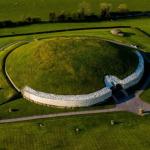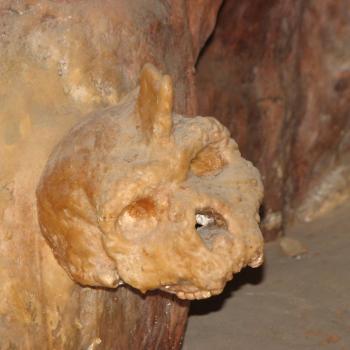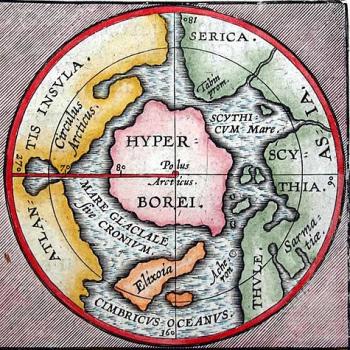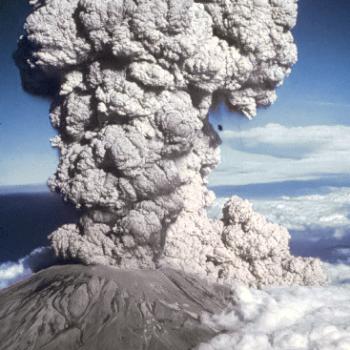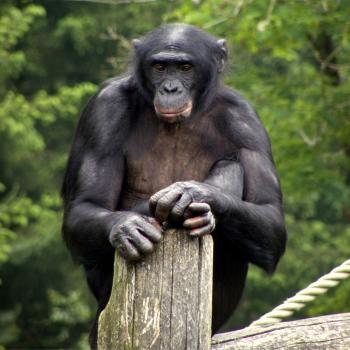Each year the sun god Apollo was believed to travel north in a chariot drawn by swans to the mysterious island of Helixoia where he spent three winter months with his people, the Hyperboreans. Some accounts suggest Apollo conducted an orchestra of human musicians and singing swans.
After three months that significantly included the winter solstice, Apollo turned his chariot around a mountain turning-post and headed back to Greece. The action of turning around a post was central to the myth, as the name of the island, Helixoia, comes from the verb “to turn round or about.”
Apollo’s winter chariot ride was well known across the Roman empire, where the Festival of Sol Invictus was celebrated on December 25 by holding 36 chariot races at Circus Maximus in Rome instead of the usual 12. Round and round the elliptical track went the chariots, covering 1,771 feet on the long axis and 262 feet on the short turn.
These repeated 180-degree turns were the most exciting moments of the races and represented nothing less than the sun turning from its southward track back north again. It was sympathetic magic fueled by the cheering crowds, encouraging the sun to turn its own corner towards spring.
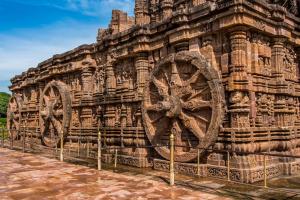
In Germanic myth, the sun god Sol held the reins of a horse-drawn chariot, as did the Hindu sun god Surya and the Norse goddess Sól. The horses represented the sun’s raw power while the god held the reigns and turned the sun in its daily orbit – and its annual arc. Surya was described turning his chariot north on the winter solstice while wearing a rainbow robe adorned with poetry. On the Bay of Bengal in Odisha, Surya was celebrated at the Sun Temple at Kornak, which was designed in the form of a chariot and aligned to the dawning sun on the winter solstice.
The powerful act of turning 180 degrees was the central focus of winter solstice mythology across cultures, reflecting the sun turning from south to north, from death to life. In 345, Pope Julius decreed that December 25 was the birthday of Jesus Christ, who supplanted the pagan sun god Sol Invictus. A 4th century mosaic found below Saint Peter’s Basilica shows Christ holding the reins of a chariot drawn by four white horses.
The U-shaped ‘Church’
Long before the Roman Empire made the arch a central feature of civic architecture, it was a sacred shape found in megaliths and earthworks across the ancient world. While some search for complex secret codes to explain ancient mysteries, cross-cultural evidence suggests the U shape once embodied the verb to turn.
Neolithic worshipers in the British Isles entered the open end of massive horseshoe-shaped stone walls to engage in seasonal rituals held at altars located at the closed end, according to archaeologist Aubrey Burl. More than a thousand people could fit into the bigger enclosures, wrote Burl, who speculated the enclosures were once common and were the architectural precursors to Christian churches across Europe.
With the open end of the U always facing east to the dawn, the open-air churches began appearing about 5,700 years ago in the Gulf of Morbihan on the coast of France, and also on the coasts of Ireland and Britain. The U-shaped enclosure at Kergonan Ileaux-Moines in Brittany was 210 feet wide and 285 feet long, capable of holding more than a thousand people.
Starting about 4,000 years ago in northern and central Peru, about 20 massive U-shaped pyramid complexes were built using river cobbles packed in fiber bags for fill. About 3,600 years ago in northeastern Louisiana, Native Americans built what’s known today as Poverty Point, a massive earthwork made of concentric U-shaped ridges framing a 37-acre plaza that bordered the Bayou Macon. Fired clay structures built more than 1,000 years ago at Chaco Canyon in New Mexico form a large U shape.
Inside the sacred arch
Sacred sites around the world were purposefully built on U-shaped land-forms inside the sharp bend of a river, or where two rivers converge.
The megalithic mounds of Brú na Bóinne, Knowth and Dowth were built on a hill inside a sharp bend in the River Boyne. Kerbstones feature serpentine motifs.
The Valley of the Kings is located within the largest, tightest U-shaped bend in the Nile River.
Built high in the Central Andes, the Old Temple at Chavín de Huántar has a U-shaped central plaza located on a U-shaped land-form between two converging rivers.
On a high hill inside a tight arching bend in the Yangon River, the Golden Pagoda of Yangon in Myanmar stands 386 feet tall, literally covered in gold and gems.
Built at the top of a sharp bend in the River Ganges, the city of Varanasi is the spiritual capital of India, where Hindus bath in the river and visit one of 2,000 temples.
No river runs through Jerusalem but the Hinnom Valley to the west and the Kidron Valley to the east were once filled with water from Gihon Spring, forming a U shape of water that once defined the city’s southern boundary. Tombs dating back 3,000 years have been found at the confluence of the two valleys.
On three different continents are sacred sites separated by more than 4,000 years, yet all three feature U-shaped megaliths or earthworks that are precisely bisected by the dawning sun on the winter solstice.
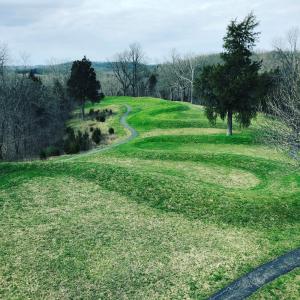
Original worshipers at Stonehenge once viewed the winter solstice dawn from a vantage point where the rising sun appeared to bisect the U shape formed by the tallest free-standing trilithons. The Great Serpent Mound in southwestern Ohio was built on a ridge above a sharp bend in Ohio Brush Creek. The rising and setting sun on the solstices and equinoxes bisects various curves in the serpent. From the vantage point of the main palace in the city of Xanadu at dawn on the winter solstice, the sun rose over a U-shaped bastion in the eastern outer wall and set over another U-shaped bastion in the opposite outer wall.
The Milky Way, rainbows & Draco’s neck
The U shape appears in several visually compelling natural forms.
It could represent the summit of a mountain or the bowl of the sky. Another possible candidate is the Milky Way, which appears in the form of an arch in midwinter because of a visual illusion caused by its lower position in the sky. The Milky Way has long been identified across cultures as a path of souls. The arch-shaped rainbow is another ancient symbol representing a doorway from this world to the next.
The Sumerian goddess Inanna was shown crowned with stars and wearing a rainbow necklace. The Greek goddess Iris traveled on rainbows between the material and spirit worlds. The Taoist poet Ch’u Yuan wrote of ascending to heaven by a rainbow. The Buddha was shown sitting on a rainbow in Bamiyan frescoes.
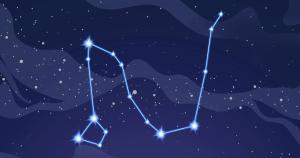
Yet another visually compelling natural phenomenon with a U-shaped form was the arching neck of the Draco constellation. Just as dawn begins to break, the bend of Draco’s neck is directly overhead, fading away in the growing light. As the sun sets, Draco’s neck reappears in the same spot, 90 degrees to the horizon.
Seeing the same U shape of stars directly overhead at both dawn and sunset must have inspired awe and curiosity in ancient cultures. Draco’s neck was a pivot point where night turns to day and day turns to night. Ancient Egyptian artwork often showed the sun bracketed between U-shaped horns.
In the symbolic language of ancient cultures, the U shape of Draco’s neck may have reflected its position at the summit of the heavens and/or was a heavenly sign of the power to turn the stars and the sun, to continue the immortal cycle of the universe.
Plato’s advice was to nourish ourselves with the sublime qualities of beauty, wisdom, and goodness so our souls would “grow wings” and propel us to meet Zeus and a host of gods “at the summit of the arch of the heavens.”
Was he talking about Draco’s neck?
The micro-cosmic skull

Among archaic practices dating back to Neanderthals is the decoration of human skulls, which were de-fleshed and/or boiled, incised with patterns, covered with clay and calcite crystals and otherwise modified after death. Many scholars believe the skull was once universally perceived as the container of the soul.
It would not have gone unnoticed that the fibrous joints in human skulls form a U-shape over the dome. Perhaps our distant ancestors considered this bell-shaped area of the head to be a microcosm of the universe and the fibrous joints a signature of the divine.
In modern terms, the frontal area of the brain contains the cerebral cortex, also known as the seat of consciousness. Just below the frontal cortex, the human voice resonates in the bell-shaped space formed by the jaw.
Joining hands in the oldest known dance, circling counterclockwise in the direction of the turning stars, perhaps pilgrims to sacred sites on the winter solstice perceived a connection between U-shaped stone churches, the rising solstice sun turning 180 degrees north towards spring and the dawn of human consciousness, celebrated in communal music.
(Ben H. Gagnon is an award-winning journalist and author of Church of Birds: An Eco-History of Myth and Religion, coming from John Hunt Publishing in March 2023, now available for pre-order.)

